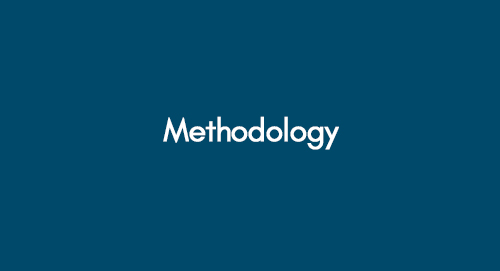
108+ Cyber Security Dissertation Topics | Free Ideas for 2025
July 28, 2022
How to Write a Dissertation Conclusion?| Suggestions and Techniques
August 1, 2022Learn How to Write Research Methodology?
Methodology is like a recipe or plan that helps us do research or projects in a careful and organized way, making sure the results are trustworthy. It's important for making our work strong and dependable.
Introduction
According to Saunders, Lewis, & Thornhill (2012), different research philosophies can be selected to conduct research, namely Positivism, Interpretivism, Realism, Subjectivism, Pragmatism, Objectivism, Functionalist Interpretive, Radical structuralist, and Radical humanist philosophies. The positivist philosophy (Positivism) was used in this research in line with the research questions and objectives.
The positivist research philosophy is based on a collection of numerical data which permits statistical analysis. Therefore, it helps in determining research findings that are based on facts and are determined objectively (Bryman & Bell, 2011). The objective of this study was to analyze the perception of professionals in financial institutes around the world regarding the potential of Bitcoin as a currency or as an investment for the future. Therefore, it was necessary to obtain the perception of several professionals in financial institutes worldwide via quantitative research methodology using questionnaires. Gratton and Jones (2004: 26) stated, "Deductive research is more generally associated with positivist and quantitative research.”
Explore Qualitative Research Methodology Examples
As the research was intended to be completed using quantitative research and data analysis, selecting Positivism in line with the literature related to the research methodology was appropriate. Moreover, the deductive research approach enables researchers to conduct statistical analyses required to analyze the quantitative data.
Selected Methodology and Its Justification
This research methodology is primarily based on a quantitative research method to address the research aim and objectives. The quantitative research method was selected by the positivist research philosophy and Deductive research approach (Gratton & Jones, 2004). The research aim and objectives necessitated that primary data be collected to analyze the perception of professionals in financial institutes around the world regarding the potential of Bitcoin as a currency or as an investment for the future. However, using qualitative research methods such as interviews was impossible due to limited time and resources.
Learn How to Write a Dissertation Methodology?
Therefore, the questionnaire was used as a quantitative research method because it enabled the researcher to collect data from a large sample of respondents within limited time and resources.
Sampling Method and Size
A sampling method that is suitable to use in this study is the non-probability or non-random sampling method. As per Saunders et al. (2011: 223), “Non-probability sampling (or non-random sampling) provides a range of alternative techniques to select a sample based on your subjective judgment.” Some of the non-probability methods are convenient sampling, snowball sampling, purposive or judgmental sampling, self-selection sampling, and quota sampling. In this research, the convenient sampling method is the non-probability sampling method used to select the research sample. As this research is based on primary data collected from a sample of professionals in financial institutes around the world, as per the literature, it was appropriate to select convenient sampling to select the participants most conveniently.
Explore Case Study Methodology Examples
As limited time and resources were available, selecting the participants most conveniently was appropriate. A sample size of 60 respondents was selected based on convenient sampling, where 30 male and 30 female professionals in financial institutes worldwide were selected using convenient sampling.
Data Collection Method
The data collection method was primary as the research aim necessitates data be collected directly from 60 employees working in financial institutes worldwide. As per Saunders (2011: 119), in positivist research philosophy, the data collection techniques which can be used are “highly structured, large samples, measurement, quantitative”. Given this, a quantitative data collection method was employed in this study, where a closed-ended questionnaire was used to collect quantitative data from the 60 participants suggested above.
The questionnaire was constructed after reviewing the past literature, and the questions were developed to seek the perception of professionals in financial institutes around the world regarding the potential of Bitcoin as a currency or as an investment for the future. The questionnaire comprised dichotomy-based questions, where the respondents were asked to select yes or no answer choices (Bryman & Bell, 2011). The closed-ended questionnaire was distributed online by sharing the link to the online questionnaire with the selected respondents on social media platforms. A pilot study was performed initially to evaluate the construct validity of the constructed questionnaire. As per the literature, 10 per cent of the sample size was selected in the pilot study, and 10 per cent of the 60 sample size was 6 (Field, 2013). Therefore, the pilot study was conducted by collecting questionnaire responses from 6 respondents on social media platforms. After ensuring the construct validity of the constructed questionnaire, the questionnaire was used to conduct a full-fledged study using 60 respondents (Creswell, 2009).
Data Analysis Method
The quantitative data in the form of closed-ended responses were analyzed using descriptive analysis by utilizing frequency distribution analysis. As per Walliman (2010: 117), “frequency distribution simply shows the values for each variable expressed as a number and as a percentage of the total of cases.” Therefore, using frequency distribution, the percentage of different answer choices selected by the respondents was identified, where the most frequently selected answer choices represented the majority's opinion. The frequency distribution of the quantitative data was conducted on the SPSS, and the results were expressed in tables, bar charts, and pie charts. The results output tables of the SPSS analysis are provided in the Appendix section.
Secondary Research Methodology Dissertation Example
Ethical Dimensions
Various ethical dimensions were covered in this research. Informed consent from all the participants was obtained to ensure they understood the research's purpose and were willing to participate. Besides, confidentiality and data security were ensured during all stages of this research by keeping the names and details of the participants anonymous while keeping data in password-protected files and locked cabinets. The university guide was followed during the research process to avoid ethical misconduct such as plagiarism.
Learn How to Craft a Dissertation Methodology Structure?
According to Vera and Nelson, plagiarism is defined as the “use or close imitation of the language and thoughts of another author and the representation of them as one's original work” (2007: 65). To avoid plagiarism while reviewing past literature, the reviewed text was properly referenced, cited, and page numbers were mentioned with quotation marks when a quotation was copied from another source.
References
Bryman, A., & Bell, E. (2011). Business Research Methods. Oxford: Oxford University Press.
Creswell, J. (2009). Research Design: Qualitative, Quantitative, and Mixed Methods Approaches. Thousand Oaks, California: SAGE Publications.
Field, A. (2013). Discovering Statistics Using IBM SPSS Statistics, SAGE.
Gratton, C., & Jones, I. (2004). Research Methods for Sport Studies. Psychology Press.
Saunders, M. N. (2011). Research Methods for Business Students, 5/e. Pearson Education India.
Saunders, M. N., Lewis, P. & Thornhill, A. (2012). Research Methods for Business Students. London: Pearson.
Saunders, M., Lewis, P., & Thornhill, A. (2009). Research Methods for Business Students. Prentice Hall.
Vera, S., & Nelson, R. S. (2007). Library plagiarism policies, Association of College & Research Libraries, p. 65.
Walliman, N. (2010). Research Methods: The Basics. Routledge.
Get 3+ Free Dissertation Topics within 24 hours?




























